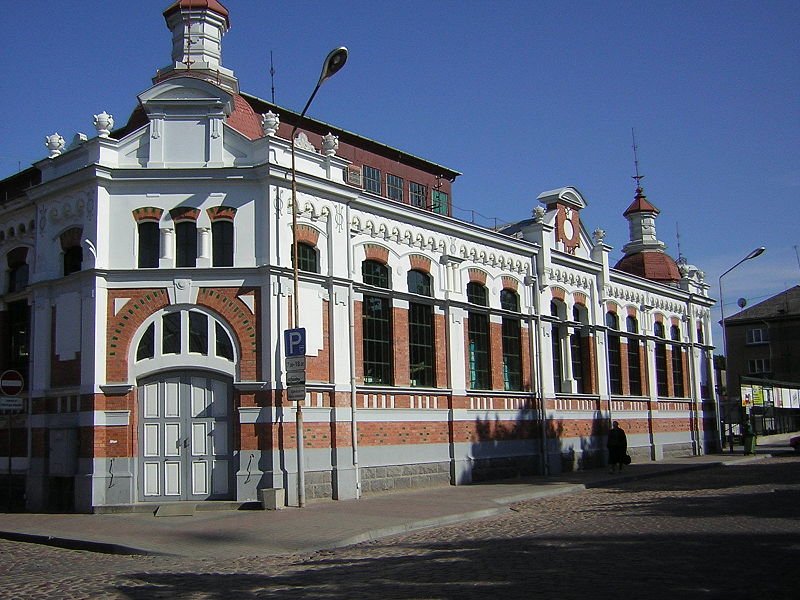
 View of Liepāja with the Holy Trinity Church
View of Liepāja with the Holy Trinity ChurchSource: https://commons.wikimedia.org/wiki/File:Liepaja_Maart-3faltegkeetskierch.JPG
Author: Zinneke

Liepāja is the third largest city in Latvia and the westernmost major city in the country. It is located in the Kurzeme Region. Covering 60.4 sq km (23.3 sq mi), it has a population of 83,000 people (2011 estimate).
Liepāja dates back to a settlement known as Līva, on the river of the same name. It was first mentioned in 1253. This settlement may have evolved into the village of Libau in 1263. It was part of the Duchy of Courland, except from 1560 to 1609, when it was loaned to the Duke of Prussia for 50,000 guldens.
The name Liepāja was mentioned for the first time in 1649. It came under the rule of Sweden following the Great Northern War of 1701, and in 1795, it was made part of the Russian Empire.
 The Orthodox Church in Karosta, in the northern neighborhood of Liepāja
The Orthodox Church in Karosta, in the northern neighborhood of LiepājaSource: https://commons.wikimedia.org/wiki/File:Karosta_-_church.jpg
Author: Chmee2

Liepāja experiences a temperate marine climate. The warmest month is July, when the average temperature rises to 16°C (61°F). Coldest month is February, with the average temperature of -3.1°C (26°F). Liepāja is renowned for being a very windy city. It even earns the nickname of "the city where the wind is born", due to its constant sea breeze.
Visiting Liepāja
Liepāja is located 220 km (136 mi) west of Riga. The most practical way to reach it is to take a bus. You can also take the train, which leaves Riga at 6:30 pm and arrives in Liepāja at 9:40 pm. Liepāja Market
Liepāja MarketSource: https://commons.wikimedia.org/wiki/File:Liepaja_market.JPG
Author: Texaner

Places of Interest in Liepāja
- Holy Trinity Church (Svētās Trīsvienības baznīca)
A plain-looking church built in the mid-18th century with one of the most ornate church interiors in the Baltic region. - House of Craftsmen (Amatnieku namiņš)
A place where traditional crafts are still practised and the handicrafts sold. Visitors can view artisans at work. - Jūrmala Park
A wooded park located between the Old Town and Liepāja Beach. - Karosta
A military harbor located 4 km north of Liepāja, once off limits to civilians during the 19th century, today it has number of sights worth seeing. - Liepāja Beach
A long stretch of sandy beach, once an environmental disaster area, today thoroughly cleaned up and open to the public. - Liepāja Museum
Museum housed in an early 20th century building within a sculpture garden. The museum displays a varied collection of objects related to local history. - Occupation Museum (Okupāciji zežīmos)
Museum that recalls the treatment it received in the hands of the Nazis and Soviet troops. - St Anne's Basilica (Sv. Annas baznīca)
Originally built in the 15th century, the present Neo-Gothic-style basilica was built in the late 19th century. It has a plain interior with a huge Baroque-style altar. - St Joseph's Cathedral (Sv. Jāzepa katedrāle)
This tall cathedral attained its present appearance in the 19th century.
 Latest updates on Penang Travel Tips
Latest updates on Penang Travel Tips
About this website

Dear visitor, thank you so much for reading this page. My name is Timothy Tye and my hobby is to find out about places, write about them and share the information with you on this website. I have been writing this site since 5 January 2003. Originally (from 2003 until 2009, the site was called AsiaExplorers. I changed the name to Penang Travel Tips in 2009, even though I describe more than just Penang but everywhere I go (I often need to tell people that "Penang Travel Tips" is not just information about Penang, but information written in Penang), especially places in Malaysia and Singapore, and in all the years since 2003, I have described over 20,000 places.
While I try my best to provide you information as accurate as I can get it to be, I do apologize for any errors and for outdated information which I am unaware. Nevertheless, I hope that what I have described here will be useful to you.
To get to know me better, do follow me on Facebook!
Copyright © 2003-2025 Timothy Tye. All Rights Reserved.

 Go Back
Go Back